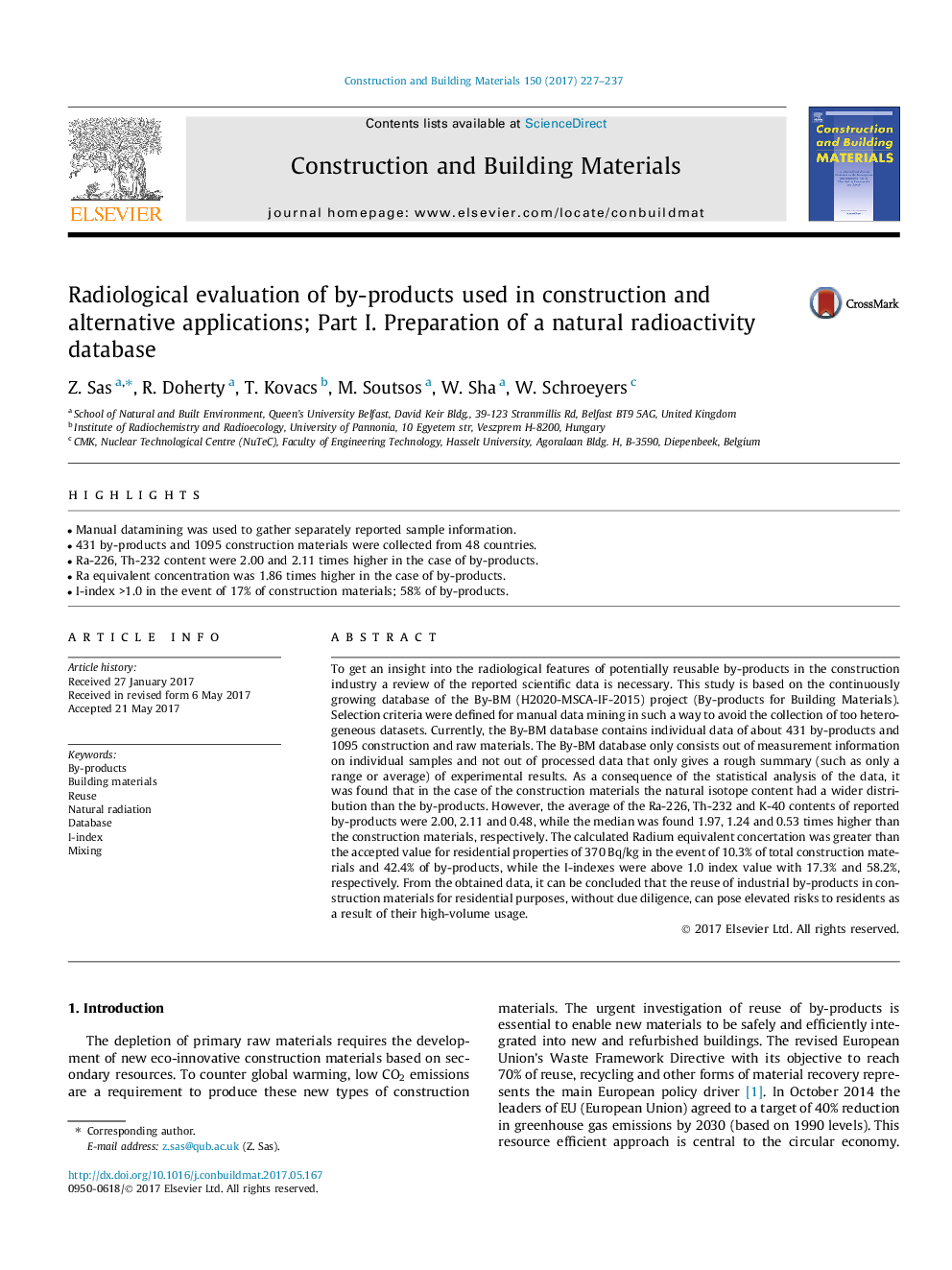| Article ID | Journal | Published Year | Pages | File Type |
|---|---|---|---|---|
| 4918278 | Construction and Building Materials | 2017 | 11 Pages |
Abstract
To get an insight into the radiological features of potentially reusable by-products in the construction industry a review of the reported scientific data is necessary. This study is based on the continuously growing database of the By-BM (H2020-MSCA-IF-2015) project (By-products for Building Materials). Selection criteria were defined for manual data mining in such a way to avoid the collection of too heterogeneous datasets. Currently, the By-BM database contains individual data of about 431 by-products and 1095 construction and raw materials. The By-BM database only consists out of measurement information on individual samples and not out of processed data that only gives a rough summary (such as only a range or average) of experimental results. As a consequence of the statistical analysis of the data, it was found that in the case of the construction materials the natural isotope content had a wider distribution than the by-products. However, the average of the Ra-226, Th-232 and K-40 contents of reported by-products were 2.00, 2.11 and 0.48, while the median was found 1.97, 1.24 and 0.53 times higher than the construction materials, respectively. The calculated Radium equivalent concertation was greater than the accepted value for residential properties of 370Â Bq/kg in the event of 10.3% of total construction materials and 42.4% of by-products, while the I-indexes were above 1.0 index value with 17.3% and 58.2%, respectively. From the obtained data, it can be concluded that the reuse of industrial by-products in construction materials for residential purposes, without due diligence, can pose elevated risks to residents as a result of their high-volume usage.
Related Topics
Physical Sciences and Engineering
Engineering
Civil and Structural Engineering
Authors
Z. Sas, R. Doherty, T. Kovacs, M. Soutsos, W. Sha, W. Schroeyers,
